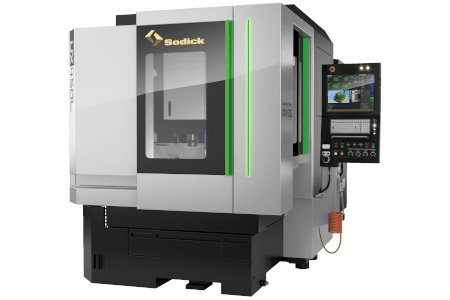Small shop (e.g., 3 machines)
Levers: Auto‑stop idling, inverters on auxiliaries, off‑peak optimization.
Result: Electricity −18% (rough), about ¥40,000 per month saved.
By replacing older machines or optimizing settings, you can cut power consumption by up to 30% (varies by conditions). The effect converts directly to CO₂ reduction, becoming a concrete lever for GX.
High idle power means baseline cost regardless of utilization. Eco modes / auto‑stop are key.
High‑efficiency spindles, regeneration, and optimal accel/decel lower the energy per part.
Optimize ON‑time and flow for coolant / mist / air‑blow. Inverters trim “invisible” power.
Latest machines with high‑efficiency spindles, regen / eco features, low‑loss servos, low standby.
Optimize cutting, tools, jigs, and setups. Shorter cycles reduce total energy used.
Automate warm‑up/standby/stop, shift loads to off‑peak, monitor energy via IoT meters.
| Item | Old machine (example) | Latest energy‑saving model (example) | Improvement |
|---|---|---|---|
| Standby power | 2.5 kW | 1.2 kW | −52% |
| Processing average | 12 kW | 9.5 kW | −21% |
| Monthly consumption | 5,800 kWh | 4,300 kWh | −26% |
Figures are illustrative. Actual results depend on model, machining, and operations.
Cutting electricity cost also cuts CO₂.
Example: −1,500 kWh per month ⇒ about −7.2 t‑CO₂ per year (using 0.4 kg‑CO₂/kWh).
Energy saving on existing equipment is a first step toward GX and resilience.
Note: The CO₂ factor differs by country and utility. Replace 0.4 kg‑CO₂/kWh with your local factor when reporting.
Public incentives and tax measures may support energy‑efficient equipment. Start with what you can do today in operations.
Always check current rules and application windows in your region.

| Item | Meaning | Energy‑saving viewpoint |
|---|---|---|
| Required power (kVA) | Apparent power at max load (guide for contract) | Contract review, power factor, peak shaving potential |
| Spindle motor (kW) e.g., 26/22 (30‑min/continuous) |
Short‑time vs continuous ratings | Use realistic average load; cap unnecessary peaks |
| Feed axis motors (kW) e.g., X=9.4, Y=6.4, Z=5.2 |
Rated outputs of each servo | Check accel/decel settings; leverage regeneration |
Example “26/22 (30‑min/continuous)” means 26 kW (30‑minute rating) and 22 kW (continuous). For saving studies, use the continuous side and measured loads.
| Item | Meaning | Energy‑saving viewpoint |
|---|---|---|
| Main spindle motor, L (kW) | Rated power of the left spindle | Optimize cutting; avoid over‑loads; check continuous rating |
| Sub spindle motor, R (kW) | Rated power of the sub spindle | Manage concurrency and cycle design to level peaks |
| Rotary tool spindle (kW) | Milling spindle rating | Shorten use time; tune rpm/feed for less energy |
Multi‑tasking machines tend to peak with high concurrency (main × sub × rotary). Level peaks by program & setup.
Combine with measurements (sub‑panel meters / on‑machine meters / IoT meters) for better accuracy.
Levers: Auto‑stop idling, inverters on auxiliaries, off‑peak optimization.
Result: Electricity −18% (rough), about ¥40,000 per month saved.
Levers: High‑efficiency spindle, regeneration, unified control of auxiliaries, demand monitoring.
Result: Line total −15% (rough), savings in the millions of JPY per year.
Compare spindle / standby / auxiliaries plus dual impacts on electricity & CO₂—great for GX reporting drafts.
📄 Preview sampleQuick real‑world examples by scale: reduction rates, ¥ savings, CO₂ cuts, and payback time.
📄 Preview sampleNumbers are rough starting points. Always prioritize catalog, nameplate, and measurements.
This is a rough estimation. For power contracts and receiving equipment, use actual data.